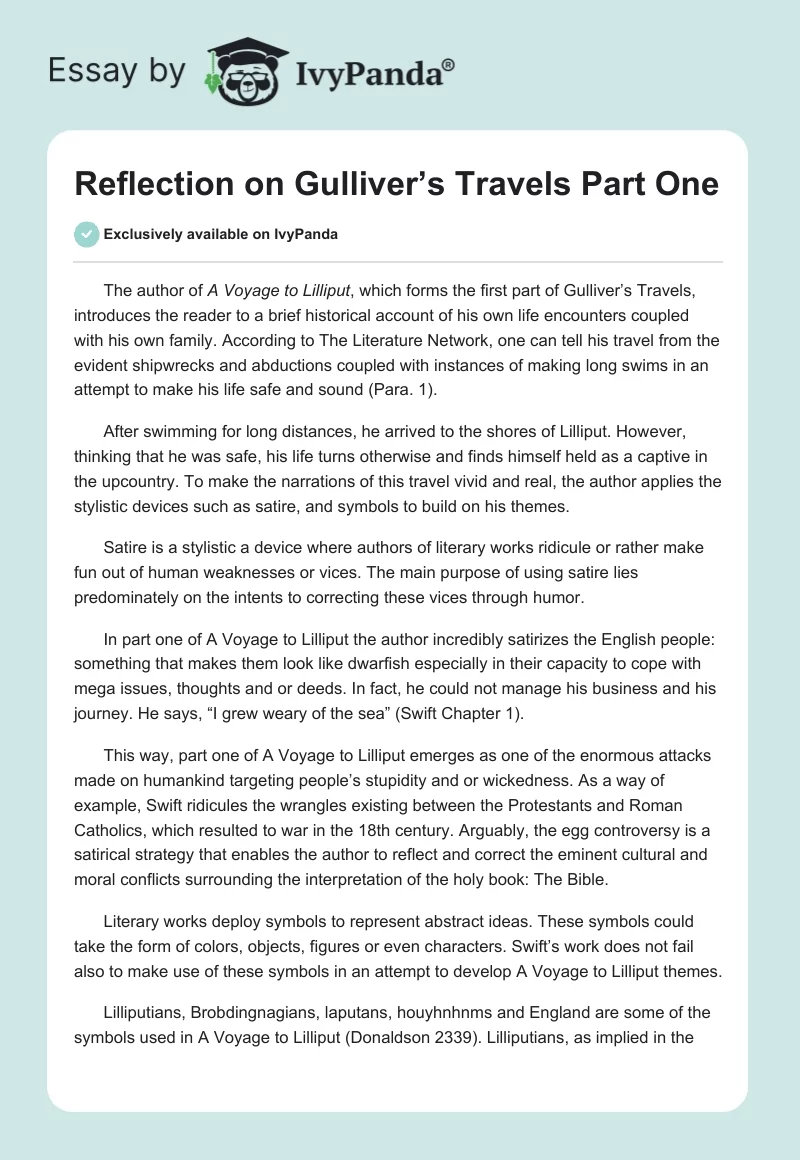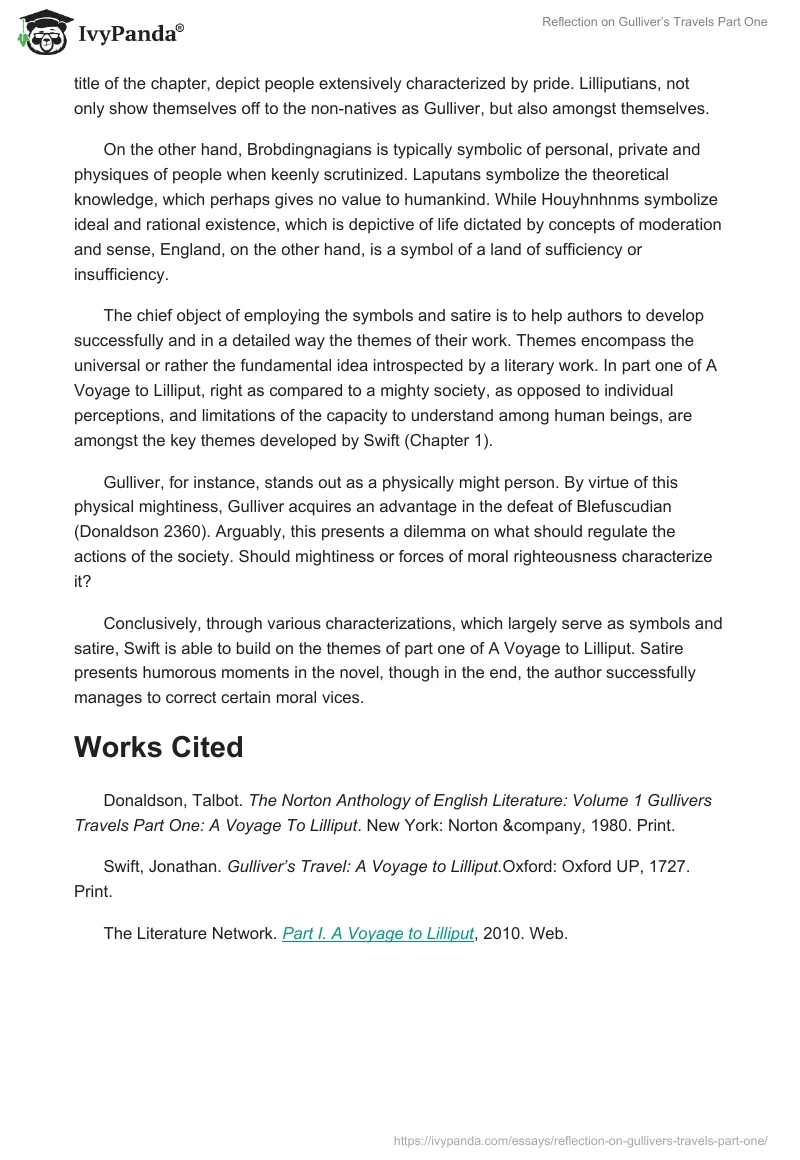The author of A Voyage to Lilliput, which forms the first part of Gulliver’s Travels, introduces the reader to a brief historical account of his own life encounters coupled with his own family. According to The Literature Network, one can tell his travel from the evident shipwrecks and abductions coupled with instances of making long swims in an attempt to make his life safe and sound (Para. 1).
After swimming for long distances, he arrived to the shores of Lilliput. However, thinking that he was safe, his life turns otherwise and finds himself held as a captive in the upcountry. To make the narrations of this travel vivid and real, the author applies the stylistic devices such as satire, and symbols to build on his themes.
Satire is a stylistic a device where authors of literary works ridicule or rather make fun out of human weaknesses or vices. The main purpose of using satire lies predominately on the intents to correcting these vices through humor.
In part one of A Voyage to Lilliput the author incredibly satirizes the English people: something that makes them look like dwarfish especially in their capacity to cope with mega issues, thoughts and or deeds. In fact, he could not manage his business and his journey. He says, “I grew weary of the sea” (Swift Chapter 1).
This way, part one of A Voyage to Lilliput emerges as one of the enormous attacks made on humankind targeting people’s stupidity and or wickedness. As a way of example, Swift ridicules the wrangles existing between the Protestants and Roman Catholics, which resulted to war in the 18th century. Arguably, the egg controversy is a satirical strategy that enables the author to reflect and correct the eminent cultural and moral conflicts surrounding the interpretation of the holy book: The Bible.
Literary works deploy symbols to represent abstract ideas. These symbols could take the form of colors, objects, figures or even characters. Swift’s work does not fail also to make use of these symbols in an attempt to develop A Voyage to Lilliput themes.
Lilliputians, Brobdingnagians, laputans, houyhnhnms and England are some of the symbols used in A Voyage to Lilliput (Donaldson 2339). Lilliputians, as implied in the title of the chapter, depict people extensively characterized by pride. Lilliputians, not only show themselves off to the non-natives as Gulliver, but also amongst themselves.
On the other hand, Brobdingnagians is typically symbolic of personal, private and physiques of people when keenly scrutinized. Laputans symbolize the theoretical knowledge, which perhaps gives no value to humankind. While Houyhnhnms symbolize ideal and rational existence, which is depictive of life dictated by concepts of moderation and sense, England, on the other hand, is a symbol of a land of sufficiency or insufficiency.
The chief object of employing the symbols and satire is to help authors to develop successfully and in a detailed way the themes of their work. Themes encompass the universal or rather the fundamental idea introspected by a literary work. In part one of A Voyage to Lilliput, right as compared to a mighty society, as opposed to individual perceptions, and limitations of the capacity to understand among human beings, are amongst the key themes developed by Swift (Chapter 1).
Gulliver, for instance, stands out as a physically might person. By virtue of this physical mightiness, Gulliver acquires an advantage in the defeat of Blefuscudian (Donaldson 2360). Arguably, this presents a dilemma on what should regulate the actions of the society. Should mightiness or forces of moral righteousness characterize it?
Conclusively, through various characterizations, which largely serve as symbols and satire, Swift is able to build on the themes of part one of A Voyage to Lilliput. Satire presents humorous moments in the novel, though in the end, the author successfully manages to correct certain moral vices.
Works Cited
Donaldson, Talbot. The Norton Anthology of English Literature: Volume 1 Gullivers Travels Part One: A Voyage To Lilliput. New York: Norton &company, 1980. Print.
Swift, Jonathan. Gulliver’s Travel: A Voyage to Lilliput.Oxford: Oxford UP, 1727. Print.
The Literature Network. Part I. A Voyage to Lilliput, 2010. Web.


